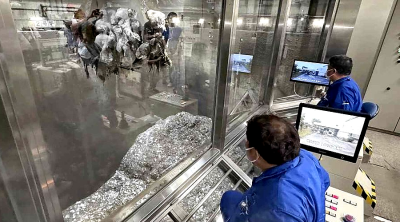By Rowena Abdul Razak / Nazihah Noor / Dr Lee Yew Fong
With the holy month of Ramadan fast approaching, the Malaysian Movement Control Order (MCO) presents several difficulties and obstacles for Malaysians, especially Muslims. The COVID-19 pandemic has seen disrupted a number of Islamic rituals, which includes but are not limited to Friday prayers and the Umra visits to Makkah and Medina. Countries have taken extreme measures from closing mosques to canceling Umra, all in the efforts to contain the spread of the illness.
The MCO has been in place since 18 March, and while COVID-19 continues to spread, it is likely that these restrictions will remain in place for longer to contain the disease. With the fasting month beginning in less than 4 weeks, there are a few areas of concern that ought to be addressed. The main concerns are over future Ramadan bazaars, and the evening tarawih prayers. In order to maintain a harmonious coordination and cooperation among all the sectors, the Ministry of Health is working closely with JAKIM and other religious community leaders to provide clear guidelines for the public.
Ramadan markets
Vibrant and bustling, the Ramadan markets are a yearly treat for many and is seen as an opportunity for more sales for businesses. In the lead up to Eid, more businesses, usually comprised of independent bakers and housewives, would appear to sell raya biscuits. While the health and safety of the general public is paramount during the crisis, there are still a number of ways to offset the loss of business and disappointment if the MCO remains in place during the fasting month.
While Ramadan markets will be closed in line with the MCO, online bazaars are still possible, and if the situation improves, then perhaps weekly evening markets (as opposed to farmer markets) would possibly be allowed. Nonetheless, controls must be strictly regulated and enforced by law. These would include, but not limited to:
1. Cordoning off the markets with separate areas for entry and exit;
2. Crowd control to limit the number of people per square feet, allowed at any one time;
3. Monitoring of vendors' and customers' symptoms (e.g. temperature check) at entry and exit points;
4. Records of vendors and visitors (name, I/C number, and contact details) if the need for contact tracing arises;
5. Possible use of disinfectant devises at entry and exit points;
6. Food vendors compliance towards Malaysia's Food Hygiene Regulations (FHR) 2009; and
7. Traffic officers around to redirect traffic to avoid congestion.
Every stall and their workers need to be fairly well protected as well with good infection control and prevention measures. Each stall should be equipped with approved alcohol-based hand rubs or hand washing facilities. For social distancing, not only should tapes be placed on the ground to designate appropriate areas, but enforcement officers should be present to ensure compliance. While contactless payments are still in its infancy, this must be strongly encouraged. However, if it is not feasible, then payment transactions could instead be done at a central booth, with exact amount provided in order to avoid the exchange of money, which practicing proper hand hygiene.
Tarawih prayers
While the MCO may be lifted, one should not be any haste to attend any congregation, this includes the evening tarawih prayers. The re-introduction of prayers at any religious center must be done with caution. Firstly, prayers can be encouraged to be conducted at home. It is quite common practice anyway, and will be especially beneficial for the elderly and the immuno-compromised. Countries such as Saudi Arabia and the UAE have banned congregational prayers outright, and may extend this to the tarawih prayers. Looking to these countries for additional Islamic guidance, may help and encourage devotees to pray at home. Engaging with community leaders and JAKIM and getting them to also encourage this will give added weight. Secondly, mosques may have to impose a maximum congregation number to avoid overcrowding. The first weeks of the Ramadan month are the busiest so smaller mosques may have to take the overflow of the bigger mosques.
Thirdly, is to possibly introduce multiple staggered sessions, and to keep each session to a minimum. For the tarawih prayers, different (separated) congregations can be organized one directly after the isya prayers and another one after the first session. If possible, the minimum of eight rakaat (plus the witr) should be encouraged to ensure that the segregated sessions are not too drawn out or far apart. Between the congregations, the prayer hall needs to be sanitized and disinfected, with the possibility of utilizing larger disinfectant devises that are still undergoing trials and validation processes.
(Rowena Abdul Razak is DPhil Candidate at the University of Oxford; Nazihah Noor is Research Associate at Khazanah Research Institute; and Dr. Lee Yew Fong is MBBS, MHM, PhD Candidate (Global Health).

ADVERTISEMENT
ADVERTISEMENT


































